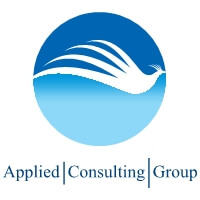
ENERGY EFFICIENCY FOR BUSINESS FROM THE SBA:
There are a ton of great ways to reduce your business’s overhead costs. If you employ these tips and tricks, and still find your utility bills are too high, then you’ll absolutely want to perform a Utility Bill Audit. Call 877-209-0021
Tips for Energy Efficiency from the SBA:
Whether you own or lease your building, you typically need lighting, heating, air conditioning, power for office equipment, and other services to stay in business. This guide will help you to maximize energy efficiency, which will save you money while helping the environment.
Heating and Air Conditioning | Lighting | Office Equipment | Food Services Equipment | Vehicles | Water Conservation
Energy Saving Tips: Heating and Air Conditioning
- “Tune-up” your heating, ventilating and air-conditioning (HVAC) system with an annual maintenance contract. Even a new ENERGY STAR qualified HVAC system, like a new car, will decline in performance without regular maintenance. A contract automatically ensures that your HVAC contractor will provide “pre-season” tune-ups before each cooling and heating season. You save energy and money, and your system may last years longer with minimal costs for yearly maintenance fees.
- Regularly change (or clean if reusable) HVAC filters every month during peak cooling or heating seasons. New filters usually only cost a few dollars. Dirty filters cost more to use, overwork the equipment and result in lower indoor air quality.
- Control direct sun through windows, depending on the season and local climate. During cooling season, block direct heat gain from the sun shining through glass on the East and especially West sides of the facility. Depending on your facility, options such as “solar screens,” “solar films,” awnings, and vegetation can help keep facilities more cool. Over time, trees can attractively shade the facility, and help clean the air. Interior curtains or drapes can help, but it’s best to prevent the summer heat from getting past the glass and inside. During heating season, with the sun low in the South, unobstructed southern windows can contribute solar heat gained during the day.
- Use fans to maintain comfortable temperature, humidity and air movement, and save energy year round. Moving air can make a somewhat higher temperature and/or humidity feel comfortable. Fans can help delay or reduce the need for air conditioning, and a temperature setting of only three to five degrees higher can feel as comfortable with fans. Each degree of higher temperature can save about 3 percent on cooling costs. When the temperature outside is more comfortable than inside, a “box fan” in the window, or large “whole facility” fan in the attic can push air out and pull in comfortable air from the outside.
- Plug leaks with weather stripping and caulking. Caulking and weather stripping let you manage your ventilation, which is the deliberate controlled exchange of stuffy inside air for fresher outdoor air. To learn more about indoor air quality in your facility visit the Environmental Protection Agency’s EPA Indoor Air Quality.
- Turn off lights (and other equipment) when not in use. High utility costs often include paying for energy that is completely wasted.
- Replace incandescent light bulbs with ENERGY STAR qualified compact fluorescent lamps (CFLs), wherever appropriate. CFLs cost about 75 percent less to operate, and last about 10 times longer.
- Install switch plate occupancy sensors in proper locations to automatically turn off lighting when no one is present and back on when people return. Even good equipment can be installed wrong, so don’t install the sensor behind a coat rack, door, bookcase, etc. It must be able to “see” an approaching person’s motion to turn on the light before or as they enter an unlit area.
- Adjust lighting to your actual needs; use free “daylight” during the day.
- To prevent glare, eyestrain and headaches, do not “over-light.” Too much light can be as bad for visual quality as too little light – and it costs a lot more.
- Install ENERGY STAR qualified exit signs. These exit signs can dramatically reduce maintenance by eliminating lamp replacement, and can save up to $10 dollars per sign annually in electricity costs while preventing up to 500 pounds of greenhouse gas emissions.
- Consider upgrading to T8 (1″ diameter) fluorescent lamp tubes with solid-state electronic ballasts that are more efficient than older T12 (1.5″ diameter) tubes with magnetic ballasts.
Energy Saving Tips: Office Equipment
- Always buy ENERGY STAR qualified products for your small business. The ENERGY STAR mark indicates the most efficient computers, printers, copiers, refrigerators, televisions, windows, thermostats, ceiling fans, and other appliances and equipment.
- Turning off machines when they are not in use can result in enormous energy savings. There is a common misconception that screen savers reduce energy use by monitors; they do not. Automatic switching to sleep mode or manually turning monitors off is always the better energy-saving strategy.
- To maximize savings with a laptop, put the AC adapter on a power strip that can be turned off (or will turn off automatically); the transformer in the AC adapter draws power continuously, even when the laptop is not plugged into the adapter.
- Common misconceptions sometimes account for the failure to turn off equipment. Many people believe that equipment lasts longer if it is never turned off. This incorrect perception carries over from the days of older mainframe computers.
- Consider buying a laptop for your next computer upgrade; they use much less energy than desktop computers, resulting in long-term savings.
- Many appliances continue to draw a small amount of power when they are switched off. These “phantom” loads occur in most appliances that use electricity, such as VCRs, televisions, stereos, computers, and kitchen appliances. In the average home, 75 percent of the electricity used to power home electronics is consumed while the products are turned off. This can be avoided by unplugging the appliance, or using a power strip and the strip’s on/off switch to cut all power to the appliance.
- Unplug battery chargers when the batteries are fully charged or the chargers are not in use.
- Studies have shown that using rechargeable batteries for products like cordless phones and PDAs is more cost effective than throwaway batteries. If you must use throwaways, check with your trash removal company about safe disposal options.
Energy Saving Tips: Food Service Equipment
- Purchase ENERGY STAR qualified commercial food service equipment. For example, qualified refrigerators and freezers can save over 45% of the energy used by conventional models, which equals as much as $140 annually for refrigerators and $100 for freezers; deep fryers can save between $60 and $180 per year; hot food holding cabinets can save up to $280 per year; and steam cookers can save between $450 and $820 per year depending on fuel.
- For existing refrigerators, clean refrigerator coils twice a year and replace door gaskets if a dollar bill easily slips out when closed between the door’s seals.
- Have large and walk-in refrigeration systems serviced at least annually. This includes cleaning, refrigerant top off, lubrication of moving parts, and adjustment of belts. This will help ensure efficient operation and longer equipment life.
- Consider retrofitting existing refrigerators and display cases with anti-sweat door heater controls, and variable speed evaporator fan motors and controls.
Energy Saving Tips: Vehicles
Save money by improving the fuel economy of your business vehicles. Use the links below to find information and tools that can help you get started.
Fuel Economy
- Why is Fuel Economy Important?
- Understand the Fuel Economy Label
- Find and Compare Vehicles based on fuel economy and more
Gas Prices
Alternative Fuels
Types of Vehicles
- Hybrids
- Plug-In Hybrids
- Electric Vehicles
- Diesel Vehicles and Fuels
- Flex-Fuel Vehicles
Tax and Financial Incentives
- Federal Fuel Efficient Vehicle Tax Incentive Information Center
- Find Incentives by User-Type.
- Grants, Loans, Leases, Rebates, HOV Lane Access, Exemptions, Fuel Discounts
Tools
Resources
Energy Saving Tips: Water Conservation
- Fix leaks. Small leaks add up to many gallons of water and dollars wasted each month. Water conservation saves energy and money.
- Use water-saving faucets and showerheads and urinals to save water.
- Install an insulation blanket on water heaters seven years of age or older, and insulate the first 3 feet of the heated water “out” pipe on both old and new units.
- If buying a new water heater, always buy the most efficient model possible. In areas of infrequent use, consider “tankless” water heaters to reduce “standby” storage costs and waste.
- Set water temperature only as hot as needed (110-120 degrees) to prevent scalds and save energy (check local codes for specific temperatures).
When landscaping, practice xeriscaping by using plants native to your climate that require minimal watering and possess better pest resistance. If local code allows, consider diverting “gray water” for irrigation.





